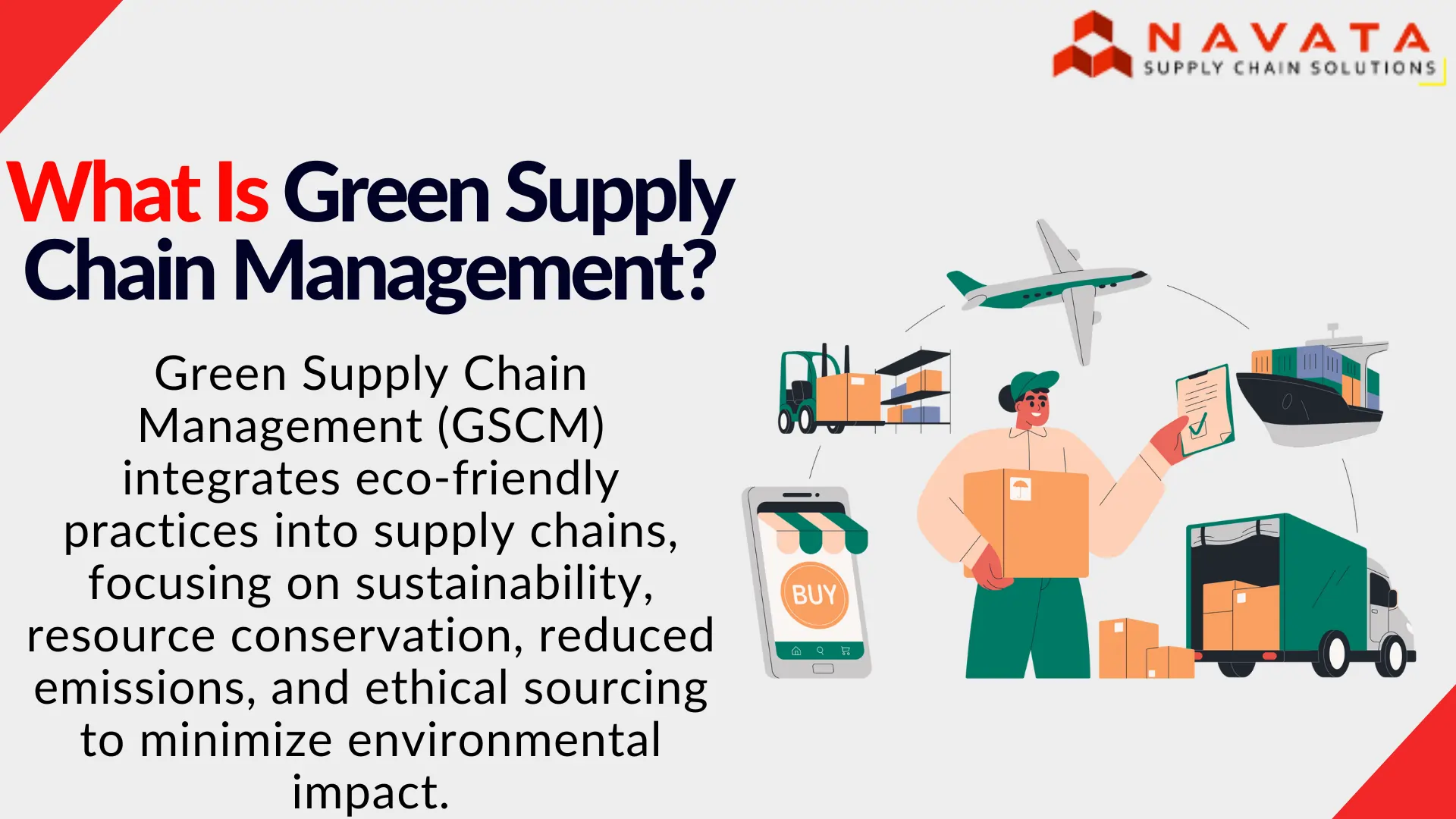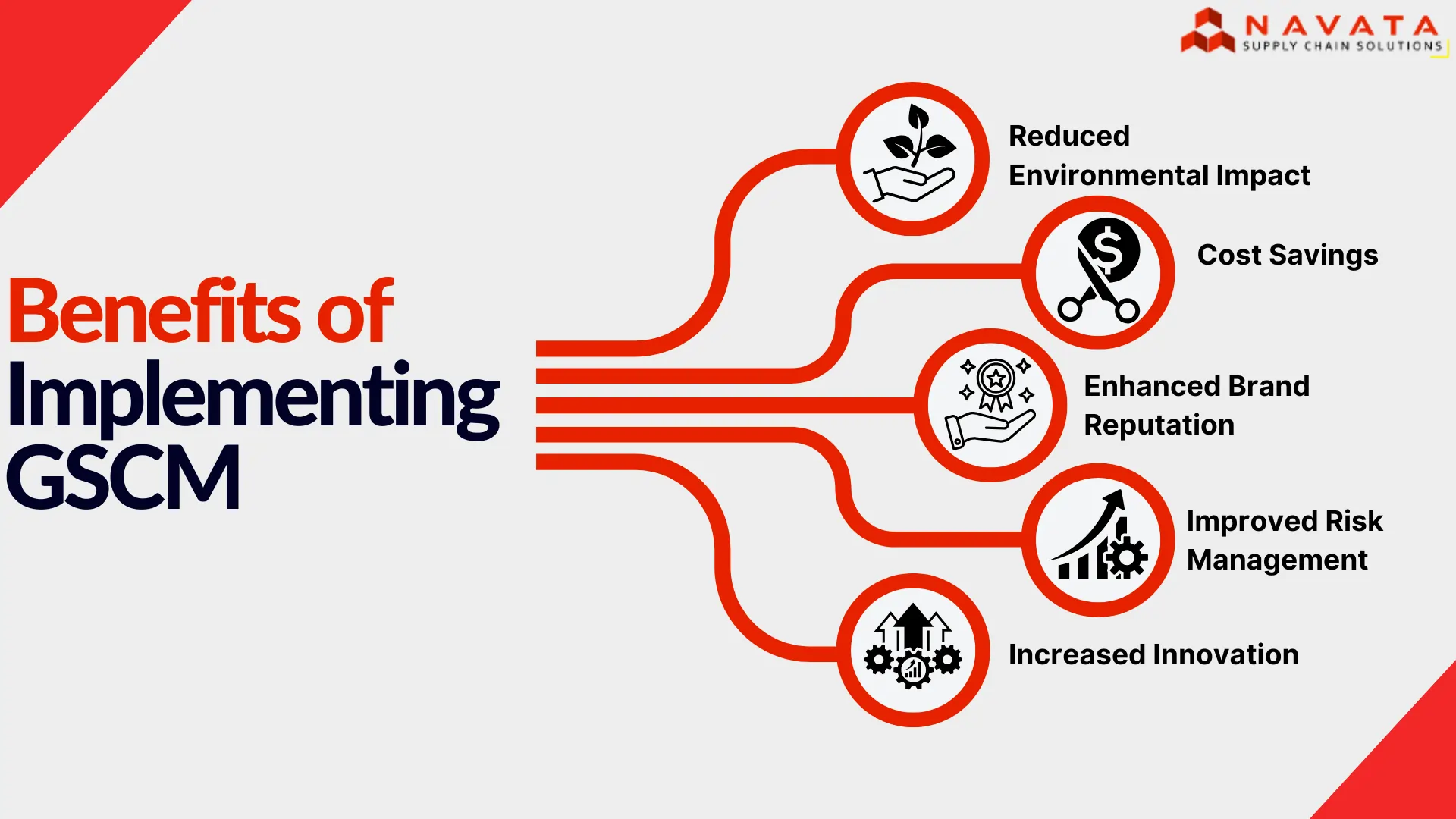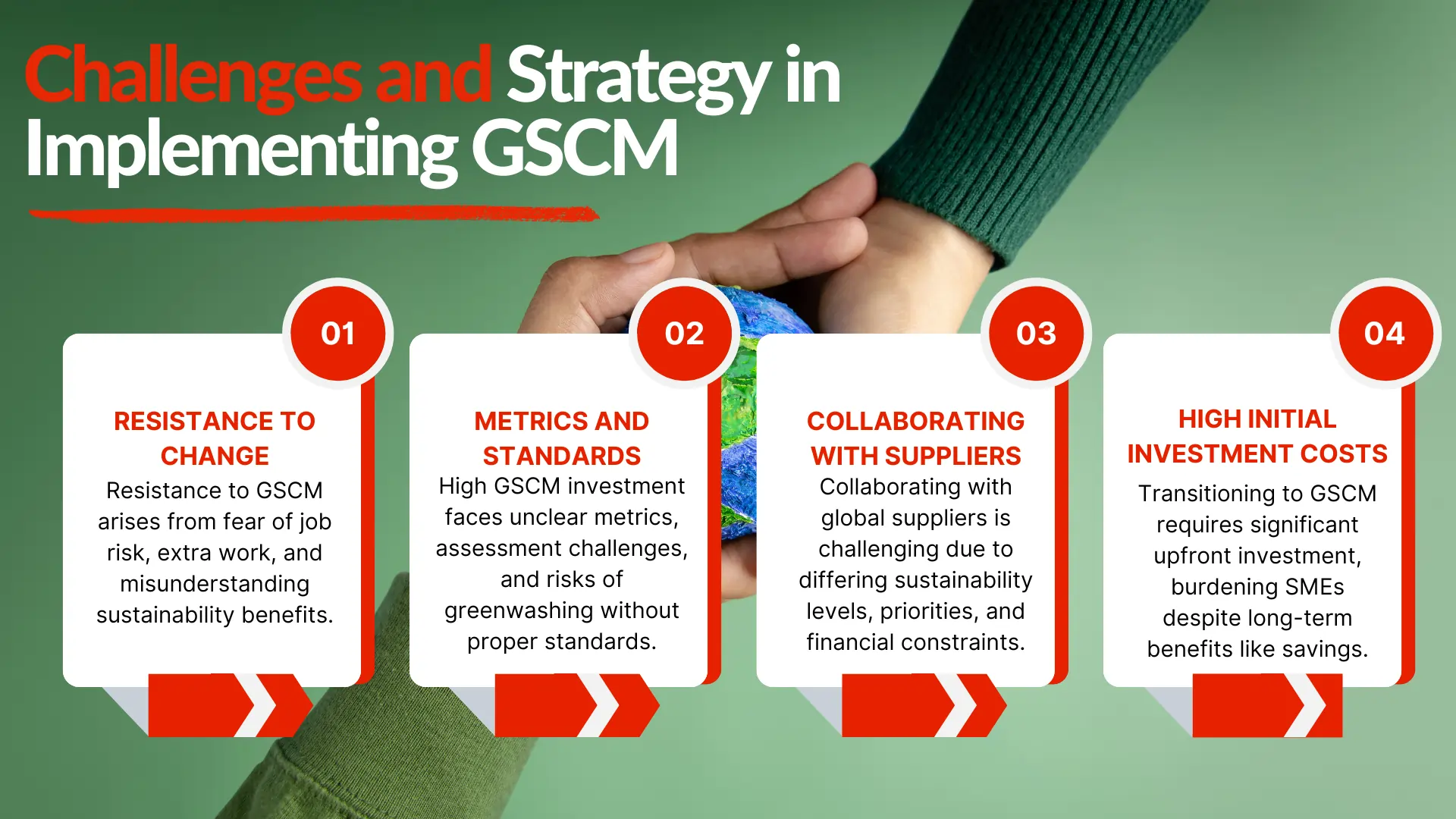What Is Green Supply Chain Management?
Green Supply Chain Management (GSCM) can be described as the incorporation of green supply chain principles into the conventional supply chain management processes of sourcing, manufacturing, packaging, distribution, and disposal. Therefore, as the awareness of environmental issues rises, GSCM is a strategic area of management that organizations interested in achieving economic and ecological sustainability cannot ignore. Sustainability in supply chains has become mandatory since consumers and regulators are becoming more conscious of environmental conservation. This blog is going to explore what GSCM is, why it is relevant, and how it evolves conventional supply chain management into green supply chain management.
Green Supply Chain Management is a business strategy, that applies environmental measures in supply chain operations to reduce the effects of environmental degradation. Typically it includes waste minimization, energy efficiency, and renewable energy consumption and management across the supply chain. While supply chain management traditionally concentrates on supply chain cost and supply chain time, GSCM is based on the triple bottom line. There is a perception that green practices benefit businesses by cutting down costs, meeting global goals, and portraying a business in a positive light in a competitive economy.

Key Areas of Focus in GSCM
Sustainable Procurement
Sustainable procurement is the procurement of materials and products that have the least effect on the environment and are made using ethical means. It means that by buying materials and resources from suppliers who have sustainable values, companies can minimize their negative impact on the environment and support sustainable practices. Standardizations and labels for wooden material or any Fair Trade certifications act as guides for environmentally responsible and sustainably sourced materials and return accountability in sourcing.
Eco-Design and Product Lifecycle Management
Eco-design is a process of developing designs of products that incorporate the least level of harm to the environment for the duration of their life cycle. This entails matters concerning reprocessing, reuse, energy conservation, and utilization of harmless materials. Product Lifecycle Management (PLM) is even taken to the next level of responsible management of end-of-life management like take-back programs for regeneration of products. These practices reduce waste and help to preserve resources, which can be appropriate to a circular economy.
Green Transport and Distribution
There is, therefore, a need to ensure that the transportation means used in the supply chain are efficient in their use of carbon emissions. Ideas like reducing the distance it travels, having a single warehouse for receiving and distribution, and using different fuels like biodiesel or electric vehicles greatly reduce the company’s effect on the environment. This also falls under green logistics, the concept of smart freight management systems to prevent last-mile running with empty trailers.
Waste Management and Recycling
Reduction of waste is one of the fundamental principles of GSCM. Some of the ways that companies are able to avoid landfill overflow include; lean manufacturing, waste segregation, and the use of recycled material. Complex solutions like turning the organic waste into fertilizer through composting or converting the waste into energy for reuse serve to offer ideal approaches to managing supply chain waste.
Environmental Performance Measurement
Measuring environmental performance is critical for evaluating deficiencies or strengths and for proving responsibility. Organizations can use EMS – ISO 14001 standards to track their sustainability initiatives. Sustainability reporting tools like the GRI or CDP allow an organization to disclose sustainability information, build credibility, and increase improvement.
Looking For Efficient Supply Chain Management!
Benefits of Implementing GSCM
Reduced Environmental Impact
GSCM greatly reduces carbon emissions, waste, and consumption of natural sources and entails the use of environmentally friendly practices in supply chain activities. Measures like embracing clean energy, utilising environmentally friendly materials, and selecting efficient logistics help create a better world and make companies relevant to the United Nations Sustainable Development Programme.
Cost Savings
When GSCM is put into practice, organizations can experience significant cost savings since energy use, waste as well as resources are optimized. For instance, energy-efficient operations will reduce utility expenses, waste reduction will also reduce the expenses incurred in disposal. Further, the use of long-lasting and reusable materials in manufacturing helps in cutting long-run procurement costs, which is good for the environment and the firm’s financial health.
Enhanced Brand Reputation
Pursuing sustainable supply chain management improves the company’s brand reputation since consumers are increasingly concerned with sustainability. GSCM can be used to showcase a company’s environmentally friendly image hence attracting customers who are environmentally sensitive and improving on customer loyalty. It also enhances a competitive standpoint in industries that seek a corporate green image.
Improved Risk Management
GSCM assists a business organization in managing risks in environmental legal requirements, supply chain breakdowns, and scarcity of resources. Hence, by actively following environmental standards and looking for a variety of sources, the companies minimize penalties for violations of standards and also – guarantee the stability of the supply chain in terms of work continuity in extreme conditions.
Increased Innovation
Sustainability is always a key driver of change, and this is why we see that green practices lead to innovation. For instance, principles of eco-design call for developing reusable and low-energy products, and green logistics call for innovations in fuel-efficient vehicles. All these innovations not only support the concept of sustainability but also create new market segments and stimulate sustainable development.

Challenges and Strategy in Implementing GSCM
Resistance to Change
GSCM implementation is usually met with some amount of resistance because people in organizations do not like change. People practicing the old supply chain management might look at the change as disruptive and unnecessary as they will feel that they will be overworked or that their jobs are at risk. Likewise, stakeholders may perceive sustainable practices as reducing productivity or even as adding extra layers of work. It may be due to the misunderstanding of the advantages of practicing sustainability or poor communiqué from the managerial level.
Strategy: It is therefore clear that the management of resistance to change needs a comprehensive change management strategy. Employers should therefore ensure that they undertake extensive training for the employees in order to improve their knowledge on the potential of GSCM and its benefits in the long run. A clear message on environmental, economic, and reputational gains that come with green practices cannot be overemphasized. Organizational leadership should, therefore, play an active role in the change process as sustainability champions and promote commitment throughout the organization. Promotion of sustainability programs and other change management initiatives that can be supported by incentives, for instance, bonuses for meeting the set sustainability goals can help employees embrace change.
Lack of Clear Metrics and Standards
To achieve the goals in implementing GSCM one has to assess and monitor the level of progress and results achieved, however, it is not easy since there are no clear indicators and yardsticks to work with. It may be challenging for organizations to identify the effectiveness of sustainability initiatives or the concordance with best practices. It also makes it challenging to assess internal or cross-industry performance, which may slow improvement or result in greenwashing – claiming of sustainable development accomplishments when none is made.
Strategy: In response to this challenge, organizations can use universally accepted standards such as the International Organisation for Standardisation (ISO) for environmental management systems, or the Global Reporting Initiative (GRI) for reporting on sustainability. They set parameters for standardization of measurement and reporting. Businesses should also undertake an LCA to determine the environmental impact of their products and processes. It can also help to align the developed metrics with the best practices by collaborating with industry associations to come up with the sectorial metrics. Both, the audits and third-party certifications add to the credibility and make for compliance to the norms.
Difficulty in Collaborating with Suppliers
Supply chain networks require the use of multiple suppliers located in different geographical locations and may be at different levels of commitment to sustainability. Some of the suppliers especially from the developing economies may not have the financial muscle or knowledge to go green. Others might prioritize cost efficiency over sustainability, leading to misalignment with a company’s green objectives. This lack of collaboration can undermine overall GSCM efforts, creating gaps in the supply chain’s sustainability goals.
Strategy: It is therefore important that organizations engage their suppliers in the creation of a sustainable supply chain. Organizations should avoid working with suppliers that do not have a similar vision on sustainability as the company. Education, training, and technical assistance can be very useful in ensuring that suppliers embrace environmentally friendly practices. Sustainability requirements placed in procurement contracts help to make stakeholders more responsible and keep everyone on the same page. Also, it may be possible to compel suppliers to conform by providing them with incentives like supply chain preferences, or subsidies for green improvements. In this case, monitoring and audits will reveal opportunities for enhancement and perpetually align the organization.
High Initial Investment Costs
Transitioning to GSCM often involves significant upfront costs, such as investing in renewable energy, upgrading to environmentally friendly materials, and redesigning processes to reduce waste. For small and medium-sized enterprises (SMEs), these costs can be particularly burdensome, deterring them from pursuing sustainable initiatives. While the long-term benefits of GSCM—such as cost savings and enhanced brand reputation—are substantial, the immediate financial burden can be a barrier.
Strategy: There are ways to minimize the high initial costs of sustainability projects by looking for green loans, government grants or tax credits. To overcome this problem, it is more advisable for companies to focus on the potential long-term financial gains that are associated with GSCM, including reduced energy costs, decreased expenditure on waste disposal as well as increased operational productivity. Dealing with other industries, one can save the cost by sharing the expenses for such green technologies or constructions. To reduce cost implications in sustainability implementation, organisations should consider implementing sustainability initiatives in phases considering areas that are most affected.

Future of Green Supply Chain Management
Trends Shaping the Future of GSCM
One of the most visible developments in GSCM is the use of circular economy methods. Unlike the classic linear supply chain model, which ends with disposal, circular models prioritize resource recovery, reuse, and recycling. Businesses are progressively using strategies such as remanufacturing items, recovering raw materials, and developing closed-loop systems to reduce waste. Furthermore, attaining carbon neutrality is becoming a crucial aim for businesses globally. This includes integrating renewable energy sources, engaging in carbon offset programs, and lowering emissions across the supply chain. Another key trend is supply chain localization, in which organizations source resources and manufacture products closer to their target consumers. This not only lowers transportation-related carbon emissions but also improves resilience to global supply chain shocks.
Role of Technology in GSCM
Technology is thus central to the enhancement of GSCM performance through the enhancement of efficiency and the support of sustainable activities. IoT enables companies to track energy, carbon, and waste through sensors in real-time from the devices connected to the network. These insights assist in enhancing operations and minimizing effects on the environment. Today’s supply chain management is improving through AI and Machine Learning by predicting the demand, managing inventory more efficiently, and also optimizing the transportation network which reduces wastage and emissions. Blockchain makes the supply chain more transparent and traceable, allowing organizations to check the sustainability of suppliers and materials. Sustainable production technologies such as 3D printing and energy-efficient production systems enhance environmentally friendly production free from wastage.
Role of Government Policies
Suppliers and customers globally are being forced to adopt laws and new policies that support sustainability in the supply chain. Sustainability requirements such as carbon taxes regulating sustainability reporting and offering incentives for green technologies are forcing organizations to adopt sustainability strategies. For example, the EU’s Green Deal and India’s EPR plan seek to integrate sustainability into the strategic management of an organization. These policies not only motivate the business to minimize their negative impact on the environment but also provide accountability for resource consumption and waste disposal.
Impact of Consumer Demand
Another factor that puts pressure on firms to implement GSCM is the increasing awareness by consumers towards environmentally friendly brands. Modern customers pay much attention to those products and services that are provided by companies that are caring about the environment. Companies are trying to meet these demands by incorporating eco-labels, and biodegradable packaging and promoting their green practices in order to appeal to these consumers. This phenomenon is reinforced thanks to the impact of social networks where consumers are increasingly demanding regarding the actions of companies in this area. This has made sustainability not only a moral responsibility but also a business opportunity for organizations in the marketplace.
Conclusion
Green Supply Chain Management (GSCM) is a key approach for companies looking to decrease their environmental impact while improving operational efficiency and brand perception. Companies may reduce environmental hazards and save money in the long run by prioritizing sustainable sourcing, eco-design, green transportation, waste management, and performance evaluation. While obstacles like as reluctance to change, high initial costs, and supplier collaboration remain, effective techniques can help overcome them.
Circular economy concepts, technology breakthroughs, and regulatory pressures will influence the future of global supply chain management. As consumer demand for sustainability develops, companies that embrace GSCM will not only help the environment but also gain a competitive advantage in the marketplace.
Thanks For Reading: What Is Green Supply Chain Management?
Powered By 360Presence

